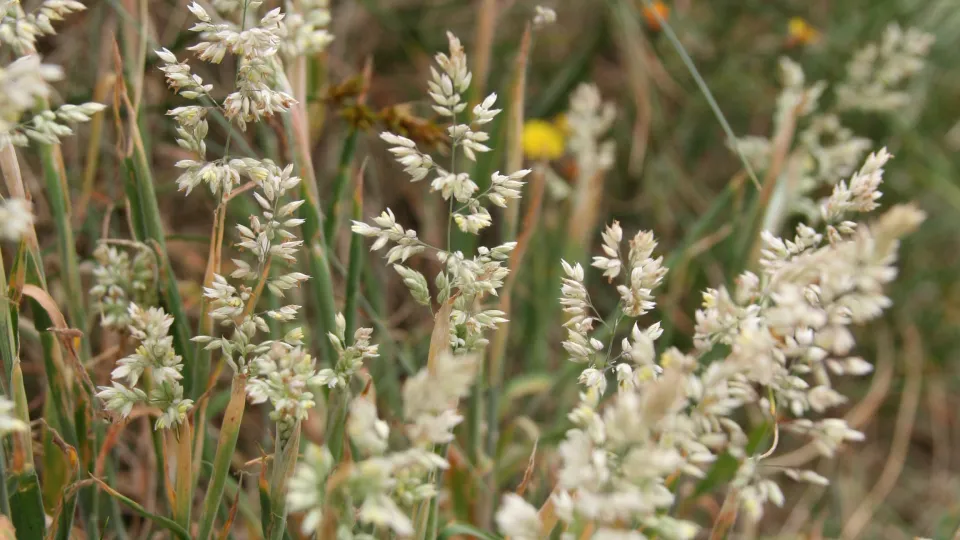
Yorkshire-fog
The soft, downy look of Yorkshire-fog makes it an attractive plant, even if it is considered a weed of cultivated land! It is also attractive to the caterpillars of the Small Skipper butterfly as a foodplant.

The soft, downy look of Yorkshire-fog makes it an attractive plant, even if it is considered a weed of cultivated land! It is also attractive to the caterpillars of the Small Skipper butterfly as a foodplant.
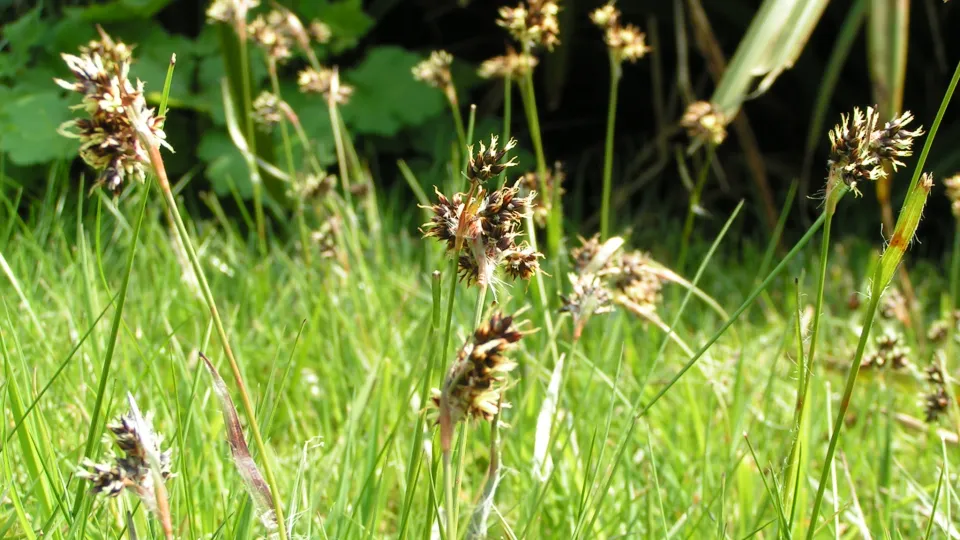
Field wood-rush is a short rush that forms tufts in grassy places, such as lawns, parks and downlands. A defining characteristic is its leaf-like leaves that are fringed with long, white hairs.

As its name suggests, the smooth stems of soft rush are thinner and more flexible than those of hard rush. It forms tufts in wetland habitats like wet woodlands, marshes, ditches and grasslands.
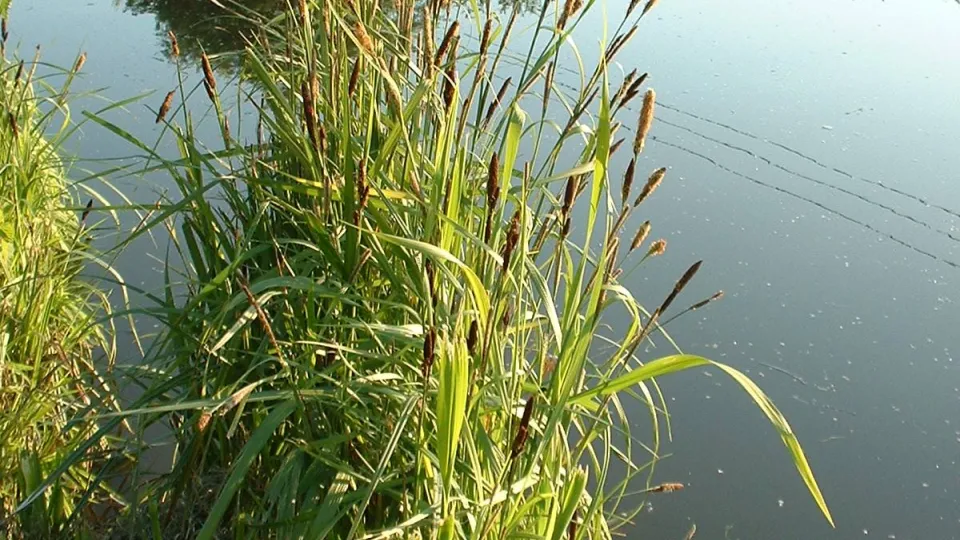
A tussocky sedge, Greater pond sedge has stout, upright flower spikes, strap-like leaves and triangular stems. It prefers lowland wetland habitats on heavy soils.
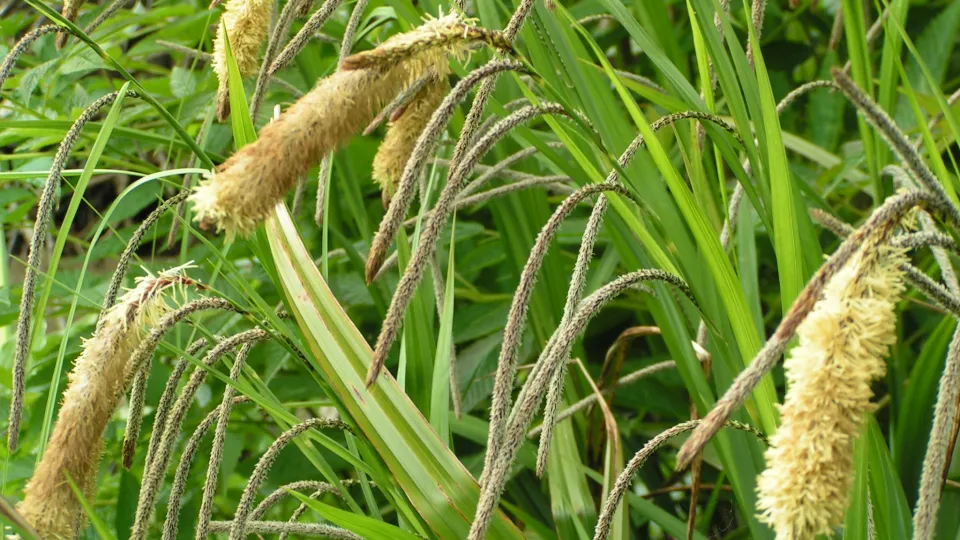
As its name suggests, pendulous sedge has drooping form with long, nodding flower spikes that give it an attractive and soft look. It can be found in wet woodlands and along riversides.

Sand sedge is an important feature of our coastal sand dunes, helping to stabilise the dunes, which allows them to grow up and become colonised by other species.
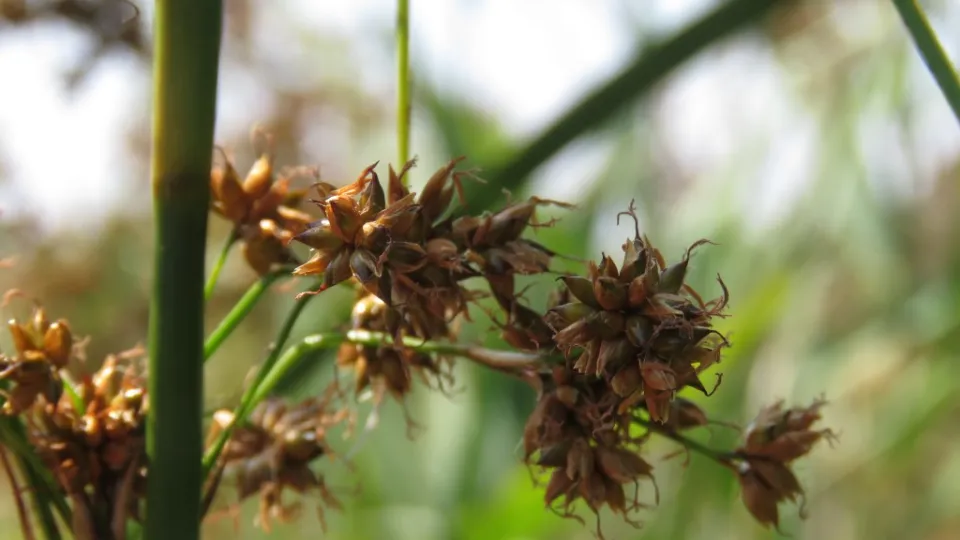
A tall and robust species of sedge, the Great fen-sedge has long leaves with sawtooth edges. It forms dense stands in lowland fens and around lakes.
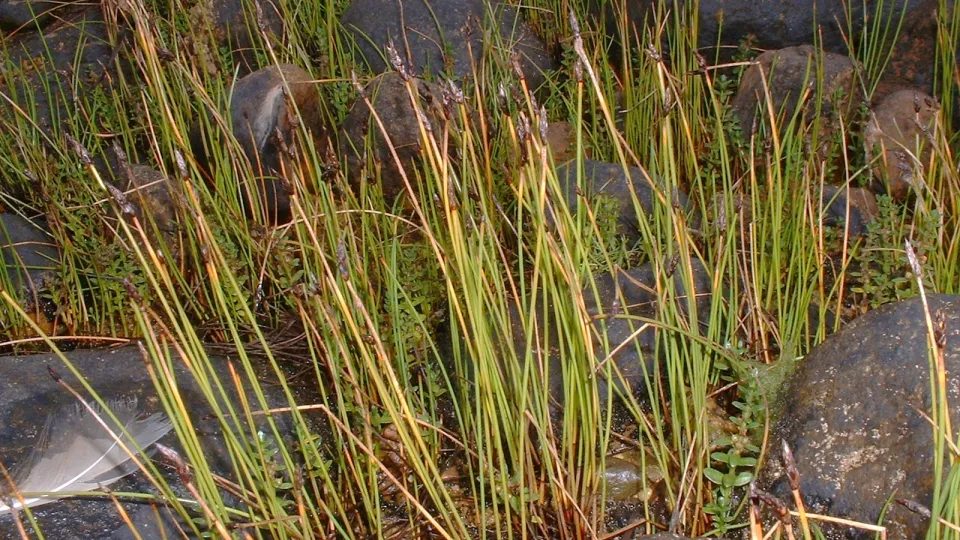
Forming mats of straight, bright green stems, Common spike-rush does, indeed, look like lots of tightly clustered 'spikes' near the water's edge of our wetland habitats.
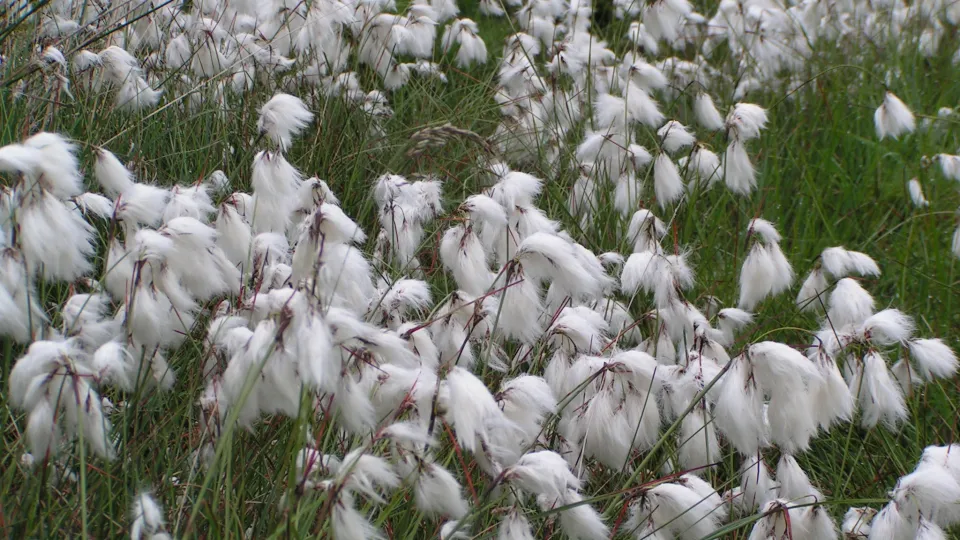
The fluffy, white heads of common cotton-grass dot our brown, boggy moors and heaths as if a giant bag of cotton wool balls has been thrown across the landscape!
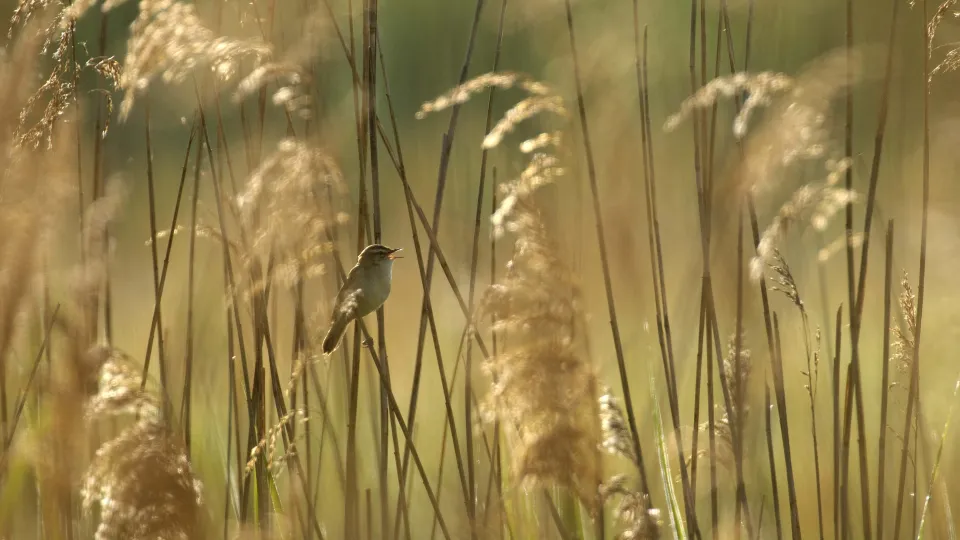
The extensive, golden-brown reedbeds that are formed by stands of Common reed are a familiar sight in our wetlands. They provide an important home for many species, including the rare Bittern.